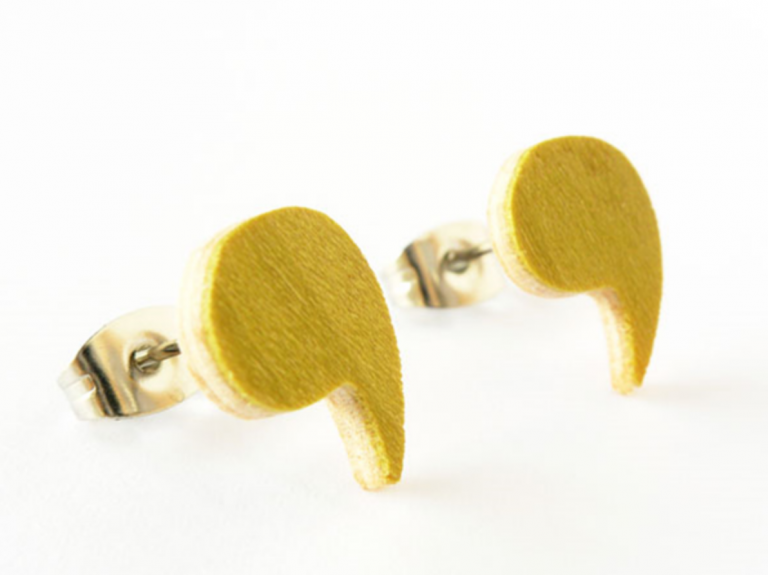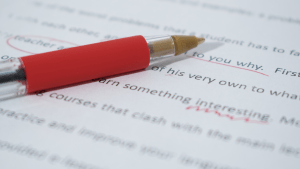Grammar rules are an important part of being a writer. A particularly sore point for many writers can be punctuation, with quotation marks being especially befuddling. This article outlines what quotation marks are, what they are used for, and when they are practically unnecessary.
What are quotation marks?
According to Collins Dictionary, quotation marks are “punctuation marks that are used in writing to show where speech or a quotation begins or ends.” Quotation marks come in pairs, with the opening quotation mark/s indicating the start of the quotation, and the closing quotation mark/s indicating where the quotation ends. Quotation marks can be single (‘ … ’) or double (“ … ”).
In shape, quotation marks are similar to the comma (or pairs of commas), with opening marks being inverted. Quotation marks, whether single or double, should always be placed at the same level as the top of capital letters. (If you are typing, you needn’t worry about this – quotation marks are superscript by default).
When should I use quotation marks?
There are three instances when one should use quotation marks. We will go through these one by one and explain in detail how to use quotation marks in each case.
i) To indicate direct speech
We use quotation marks when we want to repeat exactly what someone else has said. This is also true for written works.
- “I’m not feeling well,” said John.
- “Look,” said Sandra, “it’s raining.”
- According to Grammarly, “commas and periods always go inside the quotation marks.”
Sometimes, sections of direct speech can be quite long, for example, when a character is telling a story. This will require the quoted part to be split into paragraphs. In this case, an opening quotation mark is placed at the beginning of each new paragraph, but the closing quotation mark is only placed at the very end of the quotation, i.e. when the individual has finished speaking.
NOTE: If you want to avoid using quotation marks, you can opt to use indirect speech instead.
- John said he wasn’t feeling well.
Block quotations usually don’t require any quotation marks at all. You can recognise block quotations because they appear separated from the rest of the text, usually by using a different font style, wide indent or a difference in line spacing. The length of a quote to qualify as a block quotation differs in different style guides, so, if you are a proofreader checking a text, it’s best to refer to your brief for guidance.
For quotes within quotes, the rule is to use single quotation marks on the inside and double quotation marks on the outside, or vice versa, as illustrated below:
- “I’m not feeling well,” said John. “My doctor told me, ‘Take your medication regularly,’ but of course I didn’t listen.”
- ‘I’m not feeling well,’ said John. ‘My doctor told me, “Take your medication regularly,” but of course I didn’t listen.’
ii) Books, movies, plays or other media and publication titles
Although the Guardian and Observer Style Guide advises writers not to put book titles in quotes (with the exception of chapter or article titles), there are nevertheless many other styles, such as the AP Stylebook, which use quotation marks around publication titles. The good news is that there is no right or wrong way to style titles as long as you are consistent throughout your work; however, it’s always advisable to check with your client what style they would like you to follow while writing/correcting.
- We watched “The Lion King” on Broadway in May last year.
- In her book “The Developing Child”, Helen Bee describes the five stages of development every child goes through until they reach adolescence.
- My mother loves “Cosmopolitan”.
iii) Scare quotes
The last, and probably most misused purpose of quotation marks is scare quotes. A writer will use scare quotes by placing quotation marks around a particular word or phrase in order to imply irony, sarcasm or humour or simply to draw attention. Scare quotes are also known as shudder quotes, sneer quotes or quibble marks.
- The valet had “parked” my car, but dented it in the process.
- We were charged an outrageous “service charge”.
- All the malicious emails were “accidentally” deleted.

Rather disconcerting, don’t you think?
Single vs. double quotation marks
One of the most preoccupying decisions for writers is often whether to go for single or double quotation marks. Once again, we advise that you check with your client; but, if you’re given a clean slate, deciding whether what you’re writing is American English or British English may give you a huge hint. This because American English punctuation uses double quotation marks prevalently (especially for direct speech), while British English punctuation goes for single quotation marks. Whatever style you decide to go for, though, it’s always important to remember to be consistent.
Now you know how to use quotation marks in your work, it’s time to put them to good use! Apply as a writer today and help us put the “write” in “writer”!





